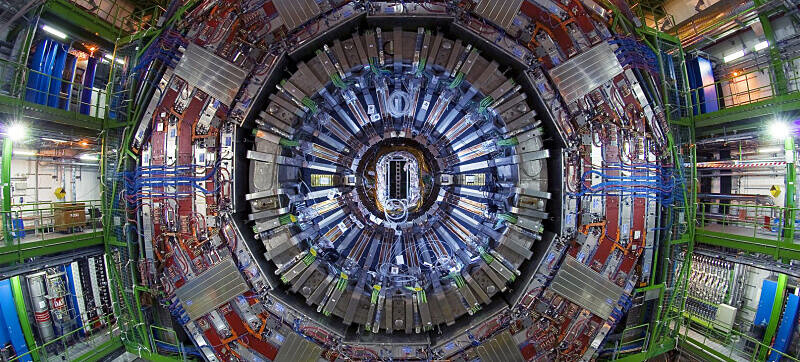Google News

A hyperon is a particle containing three quarks, like the proton and neutron, including one or more strange quarks. Physicists with the LHCb Collaboration at CERN’s Large Hadron Collider (LHC) say they have observed the hyperon decay Σ+→pμ+μ- in proton-proton collisions.

View of the LHCb detector. Image credit: CERN.
“Rare decays of known particles are a promising tool for searching for physics beyond the Standard Model of particle physics,” the LHCb physicists said.
“In the Standard Model, the Σ+→pμ+μ- process is only possible through loop diagrams: rather than the decay happening directly, intermediate states need to be exchanged in a loop.”
“In quantum field theory, the probability of such a process occurring is the sum of the probabilities of all possible particles exchanged in this loop, both known and unknown.”
“This is what makes such a process sensitive to new phenomena.”
“If a discrepancy between the experimental measurement and theoretical calculations was observed, it could be caused by a contribution from some unknown particles.”
“These particles could either be exchanged in the loop or mediate this decay directly, interacting with the quarks and then decaying into a pair of muons.”
“In the latter case, the new particle would leave a footprint in the properties of the two muons.”
Studies of the Σ+→pμ+μ- decay were especially exciting thanks to a hint of a structure that had been observed in the properties of the muon pair by the HyperCP Collaboration in 2005.
With only three events, the structure was far from conclusive, and the new study was expected to shine some light on the situation.
Ultimately, LHCb data does not show any significant peaking structures in the dimuon mass region highlighted by HyperCP, hence disconfirming the hint.
The new study does, however, observe the decay with high significance, and precise measurement of the decay probability along with other parameters will follow, allowing further searches for discrepancies with Standard Model predictions.
“The Σ+ → pμ+μ− decay is observed with very large significance in data collected in Run 2 by the LHCb experiment in pp collisions, with a yield of NΣ+→pμ+μ− = 279 ± 19,” the authors wrote in their paper.
“No structure is seen in the dimuon invariant mass distribution which is compatible with expectations from the Standard Model.”
“With the collected signal yield, in addition to a measurement of the integrated and differential branching fraction, other measurements are possible, such as charge-parity symmetry violation and forward-backward asymmetries.”
_____
LHCb Collaboration. 2024. Observation of the Σ+→pμ+μ− rare decay at LHCb. CERN-LHCb-CONF-2024-002
“This is one adorable constituent.”
“Physicists with the LHCb Collaboration at CERN’s Large Hadron Collider (LHC) say they have observed the hyperon decay Σ+→pμ+μ- in proton-proton collisions. The post CERN Physicists Observe Rarest Hyperon Decay…”
Source Link: https://www.sci.news/physics/cern-rarest-hyperon-decay-13062.html
#GoogleNews – BLOGGER – GoogleNews